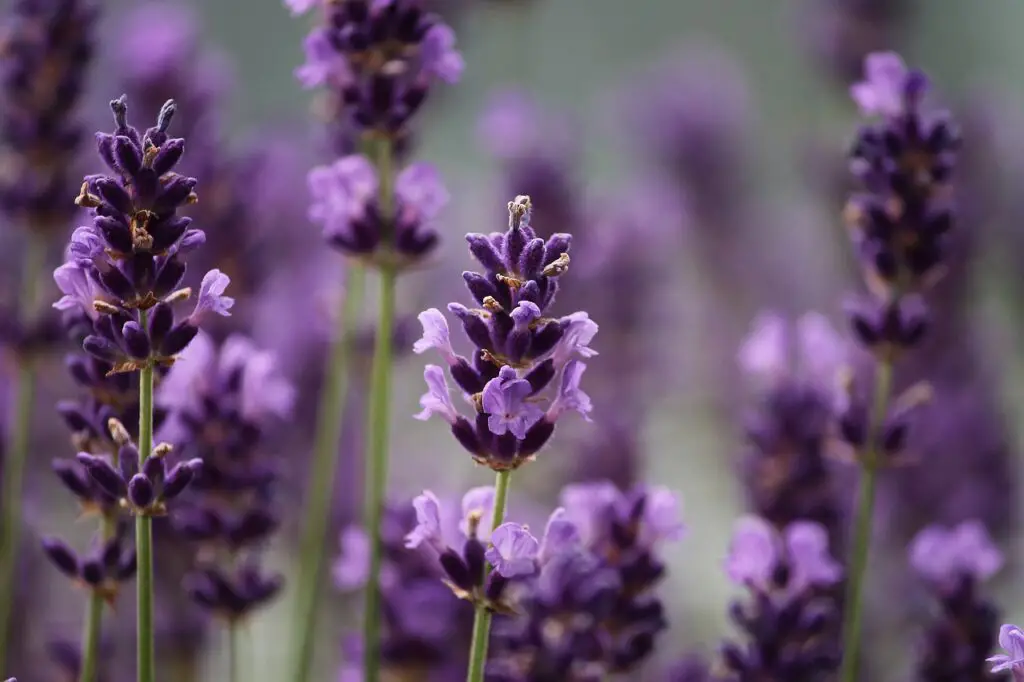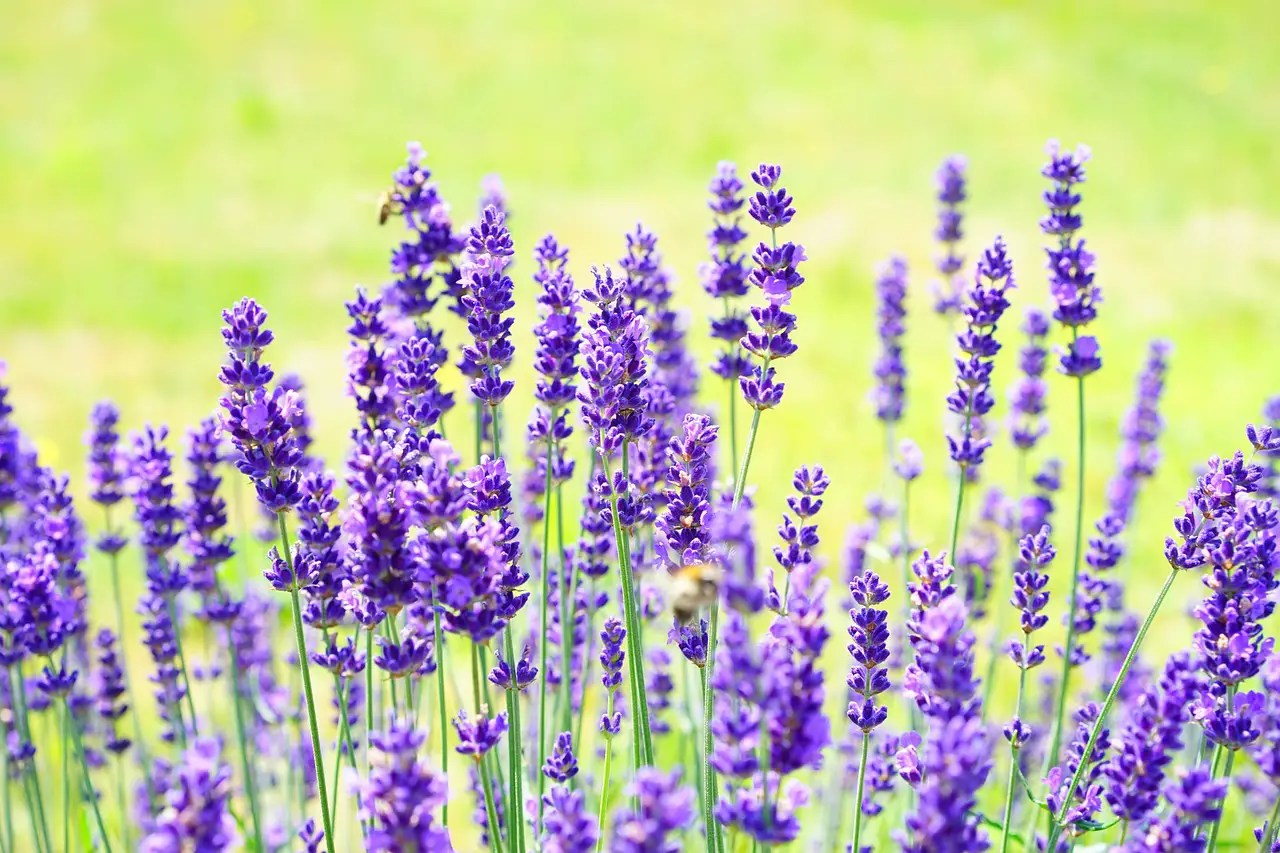What Is A Lavender Tree – Growing A Lavender Tree – Why Should You – How Big Do They Get – Best Variety – Planting Lavender – Caring For It – Best Soil – Companion Plants – Pruning And Cutting – Summary
A lavender tree might not be at the top list of most people to get. A shame since a lavender tree is actually a very beautiful addition to any garden out there. It’s easy to grow and can provide you with a lot of flowers and nectar for your local bee population.
A lavender tree can vary in size, between 2 – 3 feet tall at the most. It takes a long time getting a lavender plant up until this point, but with some patience you will be rewarded with the beauty it has. In this article we will be talking about how you can grow on yourself at home without much effort.

What Is A Lavender Tree
A lavender tree can be described as a lavender plant left to grow long and tall by basically promoting growth like that. It’s done by pruning and trimming the bottom part to force the plant to grow stems further up the main stem. This eventually turns the plant into a more tree-like shape.
The aroma of these older lavender plants are really something special. They are well fitted for growing both indoors and outdoors in pots. It might take a little bit longer indoors, but at the very least we have some growth all year around. It brings a decorative aspect as well to wherever you keep it indoors.
How To Grow A Lavender Tree
Growing a lavender tree comes down to first planting the first seed. Since most lavender bushes or plants outdoors are grown like a cluster of smaller plants, we need to do the opposite.
Too many small seedlings competing with each other and you will have a hard time getting any of them growing like they should. Instead we like to grow them individually in small containers and we can then cherry pick the ones we like the most. That way we can have the best chance at having a lavender tree grow successfully.
After you have gotten your first seedling then you can transplant that into a larger pot where you will want to keep the soil slightly damy throughout the whole growing period.
During the first year you won’t have to do a lot except for watering the soil and perhaps placing the plant in sunnier spots if needed. But the second year we can start pruning the plant a little bit and getting it ready to grow like a small tree instead.
We will begin pruning the bottom part of the plant. We want to remove about 1 fourth of the lowest levels of leaves and sprigs. You should be left with a naked stem now where the bottom does not contain any offshoots. Instead all of these should be at the top part of the plant. We continue doing this each year. Removing any bottom sprigs trying to grow out. This forces the plant to basically grow the way we want to. It should be said that it will take many years before you actually see any really noticeable difference on the plant and the look of it. Ours is over 10 years and still has some way to go.
Why Grow A Lavender Tree
There are many reasons why you might want to begin growing a lavender tree. But for us it boils down to having something very beautiful and aromatic growing at home. It loses some of the leaves at the end of the summer, but besides that it stays very nice all throughout the year.
It’s a long and time consuming project that won’t happen overnight, like most gardening projects really. But if you are patient then you will have a very beautiful and cute decorative lavender tree at home. It’s not very common to see these varieties these days, so be proud that you have something unique growing.
How Big Can Lavender Trees Grow
Lavender trees vary in size and you can more or less grow them to the size that you want. But in most cases, lavender trees will be about 2 – 3 feet tall. They can go slightly taller or smaller, all really depends on how old the plant is and the way you are promoting the growth of it as well.
If you are curious about some of the ways to promote a lavender tree to grow larger, then we often recommend fertilizing the soil more and keeping it in sunnier places. This all boosts the amount of energy that the plant will receive. In the long term you might get a lavender tree that grows quicker and also larger and more robust.

Best Lavender Variety
There are many different lavender varieties out there, all with their own unique qualities. There are English, French and Spanish lavender. The one that will grow the largest is the English lavender. This is also the most robust and hardy variety of them all.
Because of these qualities we often recommend beginners to start out with the English lavender. But it also comes as a bonus that this variety also has the most profound aroma and best flowers. They are bright purple and the smell coming from the entire plant is just magnificent.
How To Plant A Lavender Tree
If you have bought an already grown lavender tree then you might be wondering how you could go about planting something like that. It’s really quite simple. The first step is getting a rather large and fitting pot to have it in.
You could keep the lavender tree on freeland but we have found the most success growing it in pots instead. That way we can easily move it around our garden to the sunnier spots or the shadier spots, depending on what we want.
How To Care For A Lavender Tree
The lavender tree is very easy to care for, especially if you have chosen the English variety as that one can manage very well through hard times. But to put it simply, we need to make sure the soil is kept well watered. That means it should dry out for too long. instead we want the soil to be slightly damp all the time.
Ensure the plant is also getting a good amount of sunlight each day. We strive for about 8 hours each day. That will be sufficient for it to generate energy by performing photosynthesis in the leaves. You will see that the plant is getting too much sun when some of the leaves are turning brown instead.
Best Soil For Lavender Trees
The best soil for lavender trees is a loamy soil. This is perhaps the best overall soil out there. It means that water will drain away easily. This is very important as too much water trapped in the soil will cause root rot on most plants.
It happens as the roots are drowning because oxygen cant reach into the soil. It will show above the soil as the plant in question starts to turn black on both the stem but also the leaves. This is very serious as in no time, the entire plant might begin to decompose.
Companion Plants For Lavender Trees
There is quite a large amount of plants that you could be growing next to lavender trees. But to keep it nice and short, herbs are a great option. That could be all from thyme to sage or oregano. Basically Mediterranean plants in general are actually potential options. They won’t compete with the lavender tree.

How To Prune And Cut A Lavender Tree
It’s very simple and easy to prune and cut a lavender tree. The difficulty comes more when we are shaping the top part of the tree. That’s when your creativity can really shine. But as a bottom line, we need to prune the bottom part of the lavender tree. We have basically kept the bottom half of the tree free from sprigs and twigs growing out.
But as for the top level, you can yourself decide how you want to shape and bend the tree. If you want a more sphere shape to it then you prune and cut rather freely until you get the look you want. This is the approach that we take to pruning lavender trees.
Summary
Lavender trees are not that common to have at home, but they are in fact a really great option if you want something decorative and aromatic in the garden. If you are growing and cultivating the English lavender variety then it will be very robust and not require that much attention.

